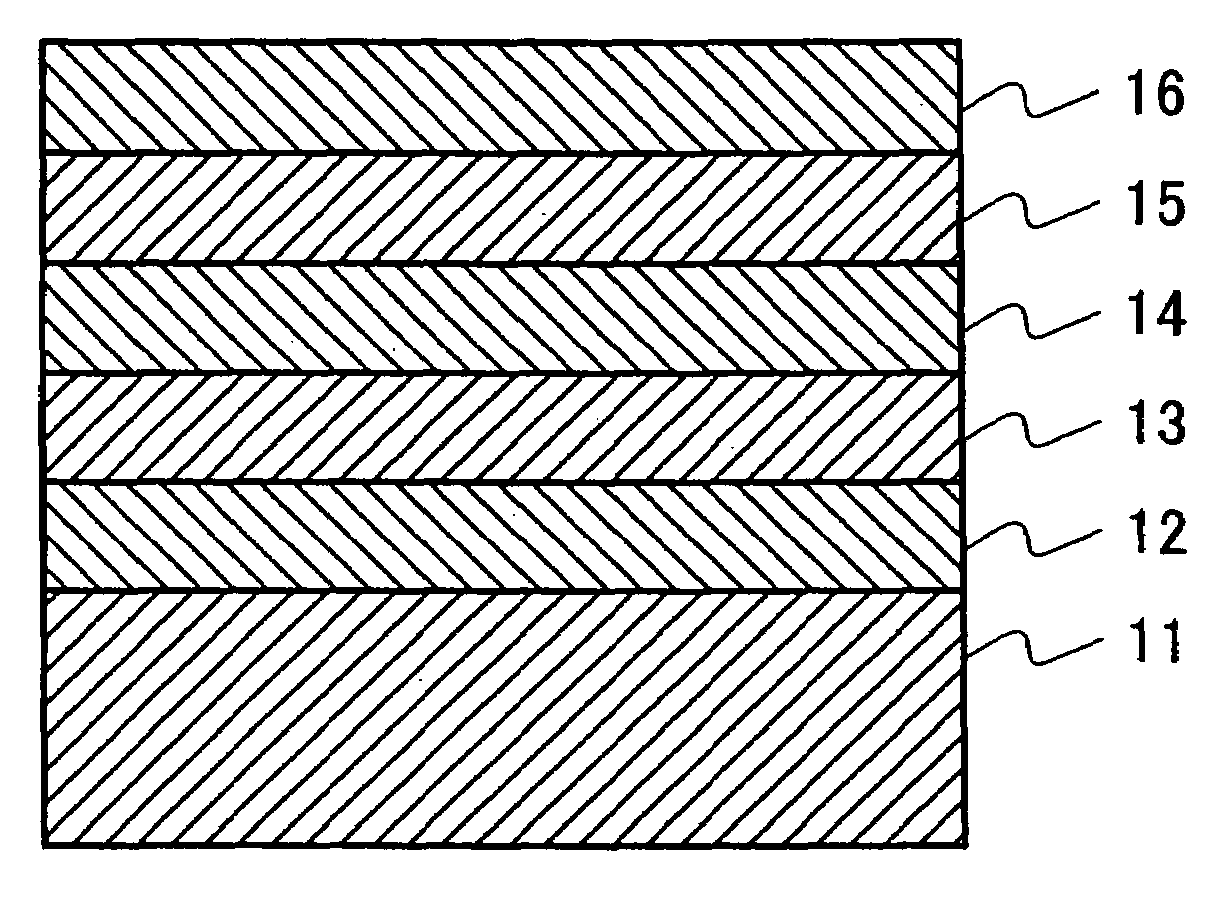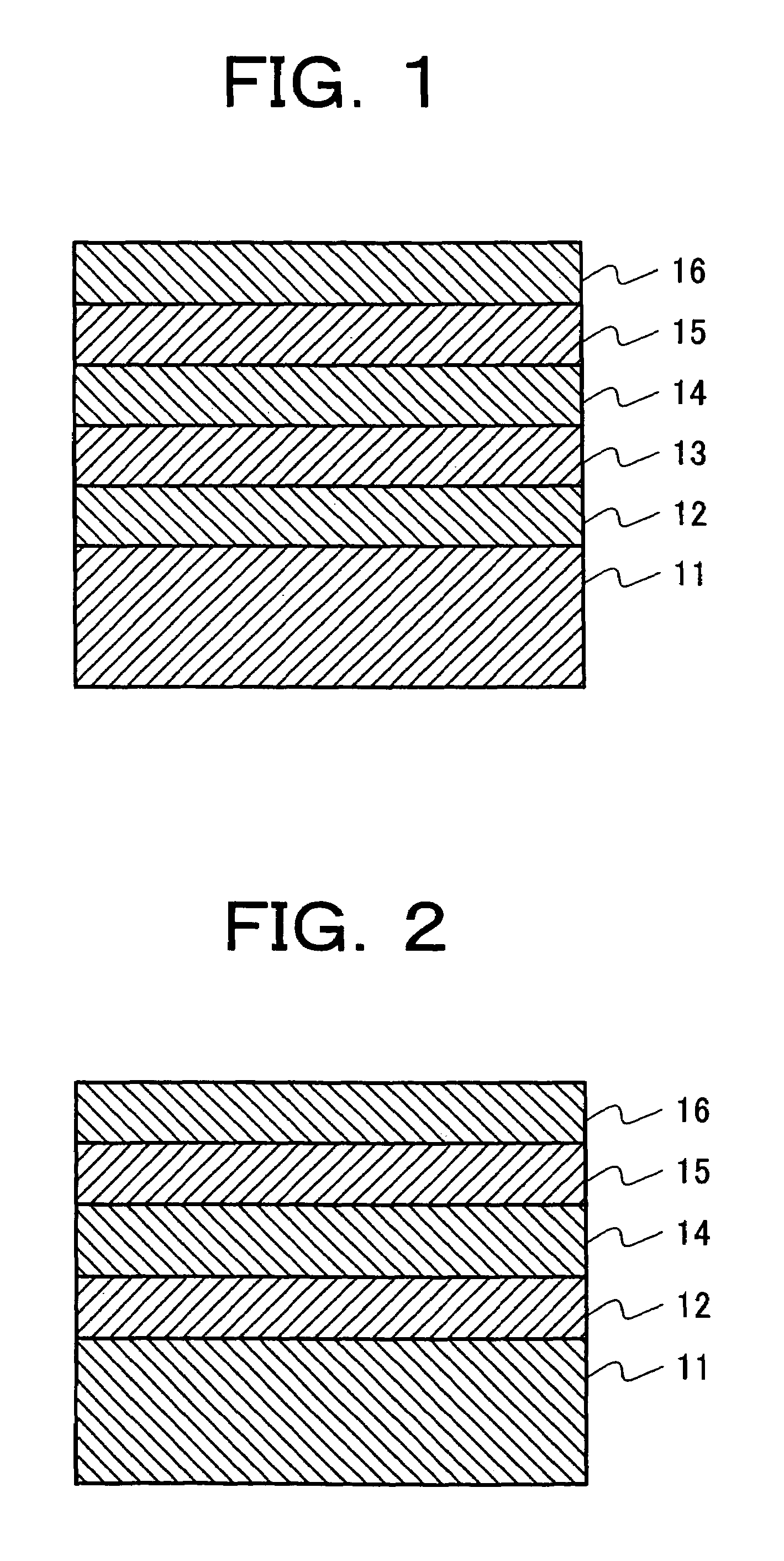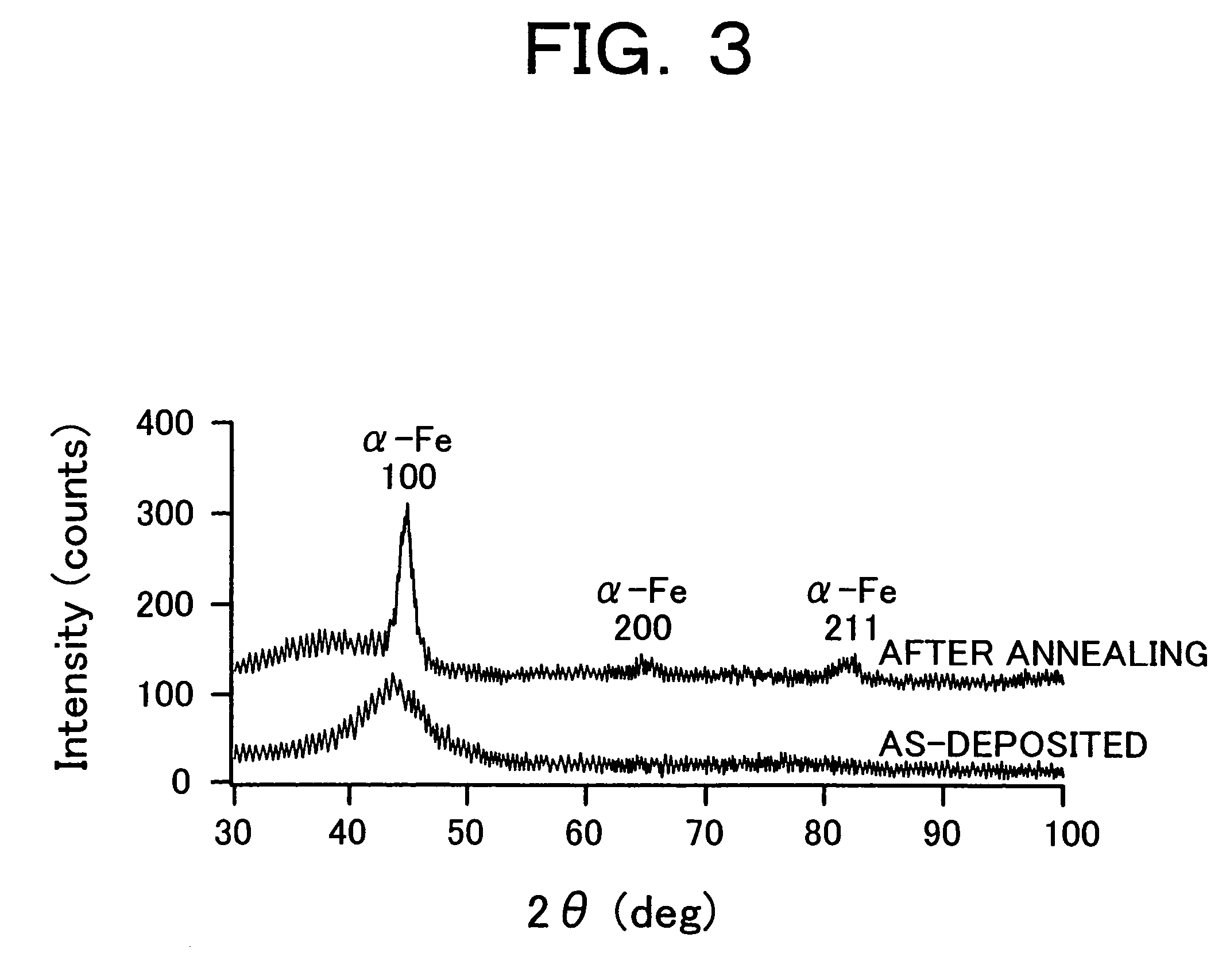Perpendicular magnetic recording media and magnetic storage
a magnetic recording media and perpendicular magnetic technology, applied in data recording, nanomagnetism, instruments, etc., can solve the problems of insufficient magnetic properties, difficult to thin the intermediate layer, and difficult to obtain sufficient magnetic properties, so as to reduce the noise of the transition noise originated in the effect of small saturation magnetic flux density and reducing the noise of the soft magnetic underlayer
- Summary
- Abstract
- Description
- Claims
- Application Information
AI Technical Summary
Benefits of technology
Problems solved by technology
Method used
Image
Examples
embodiment 1
[Embodiment 1]
[0029]FIG. 1 shows a layer constitution of a magnetic recording medium of the present embodiment. A glass substrate, to which an alkaline cleaning was performed, having a diameter of 2.5 inches was used as a substrate 11, and a soft magnetic underlayer 12, an intermediate layer 13, a perpendicular recording layer 14 and a protective layer 15 were sequentially formed by DC magnetron sputtering method.
[0030]An Fe-8 at % Ta-12 at % C target for the soft magnetic underlayer 12; a Ni-37.5 at % Ta-10 at % Zr target for the intermediate layer 13; a Co-22 at % Cr-10 at % Pt target, a Co-22 at % Cr-12 at % Pt target and a Co-22 at % Cr-14 at % Pt target for the perpendicular recording layer 14; and a carbon target for the protective layer 15 were used respectively. Film forming was performed under the conditions that an Ar gas pressure was set at 0.5 Pa, the soft magnetic underlayer 12 was formed, and then annealing by an infrared lamp heater at 1600 w for 12 s was performed (a...
embodiment 2
[Embodiment 2]
[0043]In a layer constitution similar to the embodiment 1 (refer to FIG. 1), the intermediate layer 13 was formed and then exposed to a mixed gas atmosphere of 99% Ar-1% O2 (0.36 Pa to 3.6 Pa) for 5 seconds. Thereafter, the perpendicular magnetic recording layer 14 and the protective layer 15 were sequentially formed by the DC magnetron sputtering method. The Fe-8 at % Ta-12 at % C target for the soft magnetic underlayer 12; the Ni-37.5 at % Ta-10 at % Zr target for the intermediate layer 13; the Co-22 at % Cr-14 at % Pt target for the perpendicular magnetic recording layer 14; and the carbon target for the protective layer 15 were used respectively. The film forming conditions and the film thickness of each layer are similar to the embodiment 1 except that the thickness of the intermediate layer is fixed at 5 nm.
[0044]The recording-reproduction property of the medium of the present embodiment was evaluated under the conditions similar to the embodiment 1 (the ring hea...
embodiment 3
[Embodiment 3]
[0048]In a layer constitution similar to the embodiment 1 (refer to FIG. 1), the Fe-8 at % Ta-12 at % C target, the Fe-8 at % Hf-12 at % C target, the Fe-10 at % Nb-12 at % C target, the Fe-13 at % Ti-12 at % C target and the Fe-8a t% Zr-12 at % C target for the soft magnetic underlayer 12; the Ni-13.5 at % Nb-10 at % Zr target for the intermediate layer 13; the Co-22 at % Cr-14 at % Pt target for the perpendicular magnetic recording layer 14; and the carbon target for the protective layer 15 were used respectively. The film forming conditions, the film thickness of each layer and the lubricant layer 16 are similar to embodiment 1.
[0049]Samples, in each of which only the soft magnetic underlayer was formed on the glass substrate, were used to examine the crystallinity by the thin-film X-ray diffraction (a Cu-K α ray was used, an X-ray incident angle θ: 2 degrees). All the samples showed only broad peaks peculiar to the amorphous material before annealing. However, afte...
PUM
| Property | Measurement | Unit |
|---|---|---|
| thickness | aaaaa | aaaaa |
| thickness | aaaaa | aaaaa |
| thickness | aaaaa | aaaaa |
Abstract
Description
Claims
Application Information
 Login to View More
Login to View More - R&D
- Intellectual Property
- Life Sciences
- Materials
- Tech Scout
- Unparalleled Data Quality
- Higher Quality Content
- 60% Fewer Hallucinations
Browse by: Latest US Patents, China's latest patents, Technical Efficacy Thesaurus, Application Domain, Technology Topic, Popular Technical Reports.
© 2025 PatSnap. All rights reserved.Legal|Privacy policy|Modern Slavery Act Transparency Statement|Sitemap|About US| Contact US: help@patsnap.com



